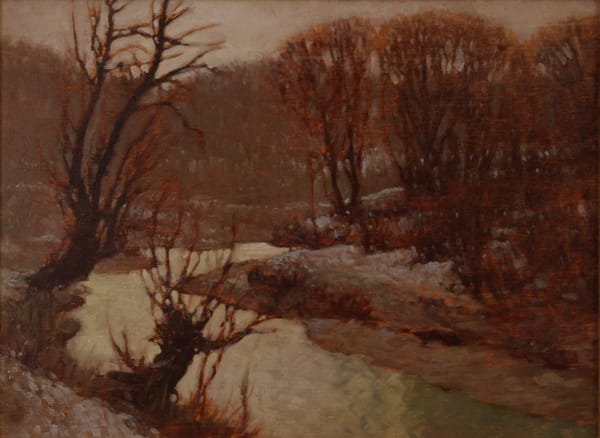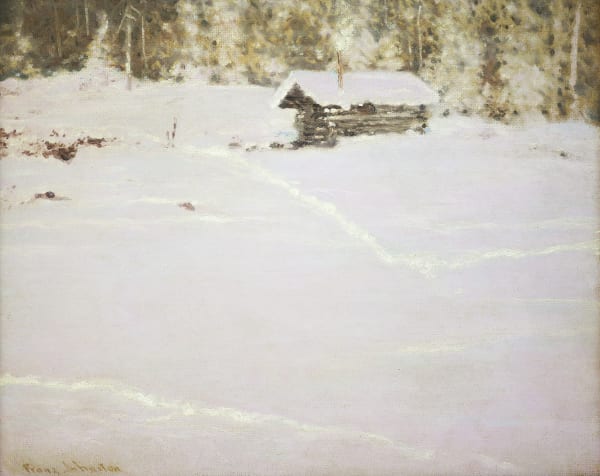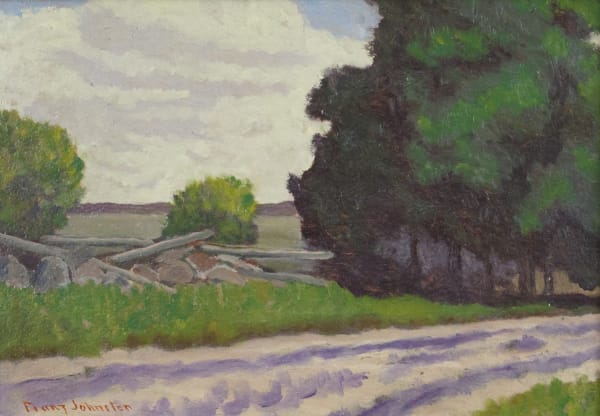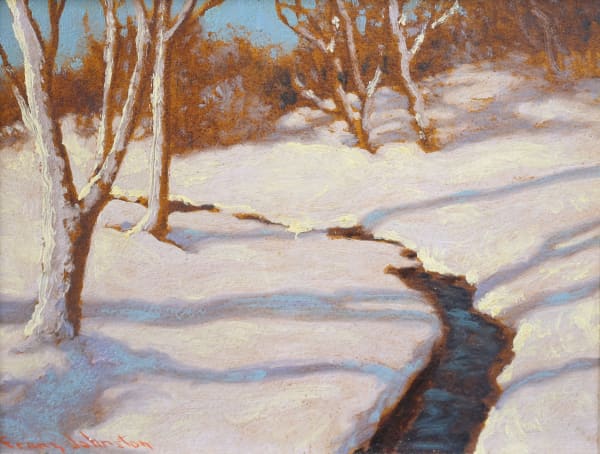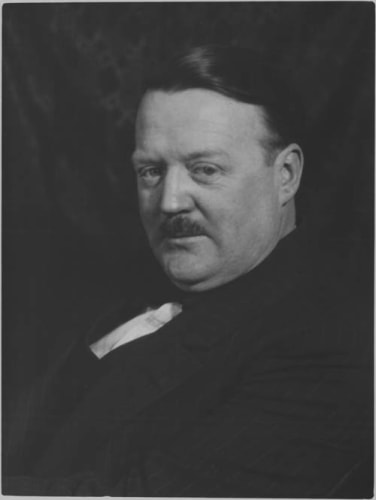“Few men have loved Canada with such ardent integrity. No man in the history of our land has left such an extensive body of work in all of the important areas of expression.”
Rothmans Art Gallery of Stratford
Frank Johnston (June 19, 1888-July 9, 1949)
Frank Johnston was born in Toronto, Ontario, the son of Hugh Hans and Mary Elizabeth (Roderick) Johnston. From a young age, he demonstrated a passion for art, beginning to draw at six after receiving a slate from his father. He was educated at the Central Technical School and the Central Ontario School of Art in Toronto under the tutelage of Gustav Hahn, William Cruikshank, and George Agnew Reid.
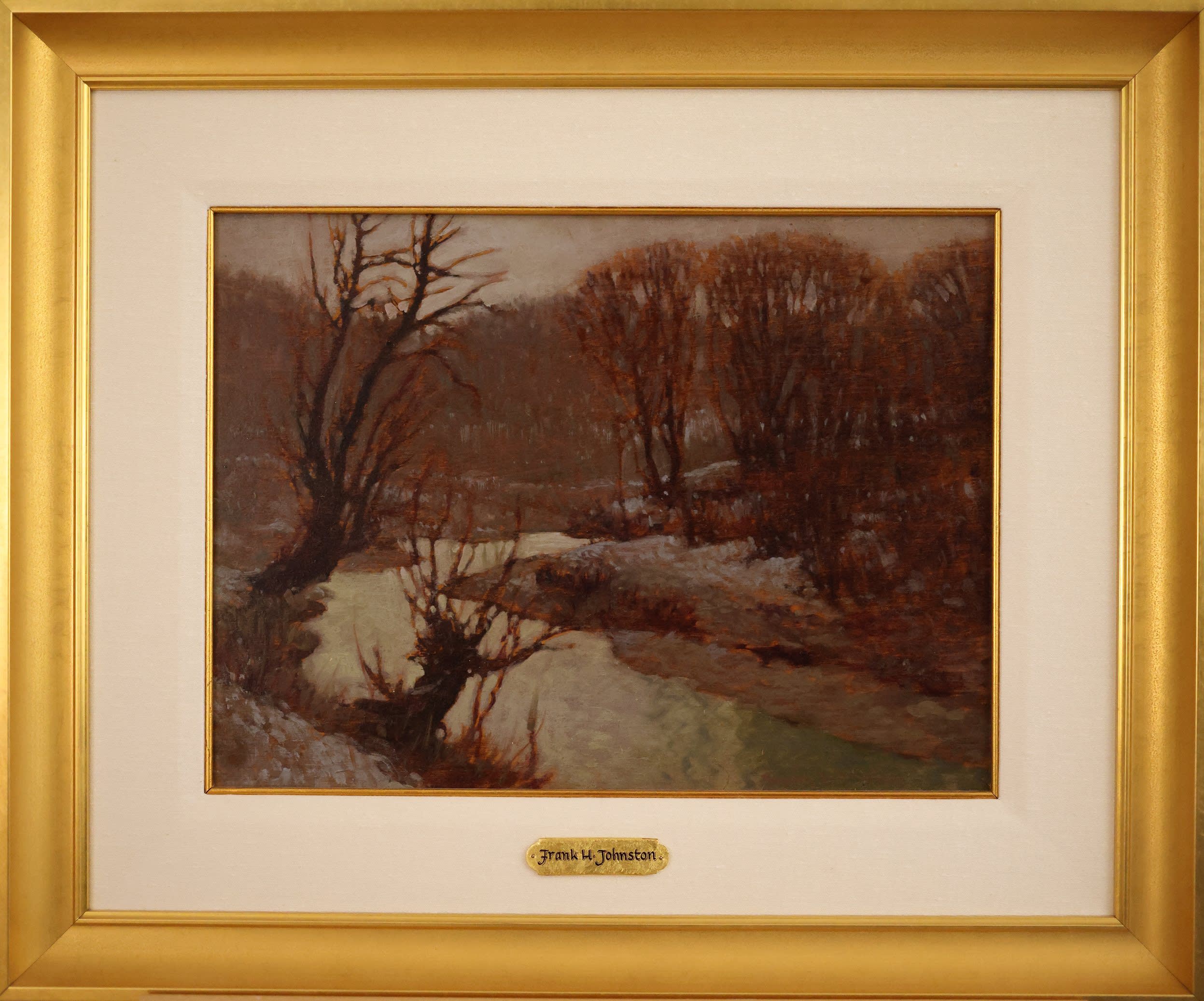
Frank Johnston; Waning Winter
In 1908, Johnston joined the commercial art firm Grip Ltd, where he met future Group of Seven members J.E.H. MacDonald, Arthur Lismer, and Franklin Carmichael. His early career also included a stint as a jewelry designer for Ryrie Bros. and later at Brigdens of Toronto. In 1910, Johnston married his childhood sweetheart Florence Jamieson.
Seeking further education, he moved to the United States in 1910, studying at the Pennsylvania Academy of Fine Arts under Daniel Garber and Philip Hale. He also studied at the Art Students’ League in New York under Robert Henri while working at Carlton Studios. Upon returning to Toronto in 1915 due to the outbreak of World War I, Johnston reconnected with Tom Thomson and other future members of the Group of Seven.
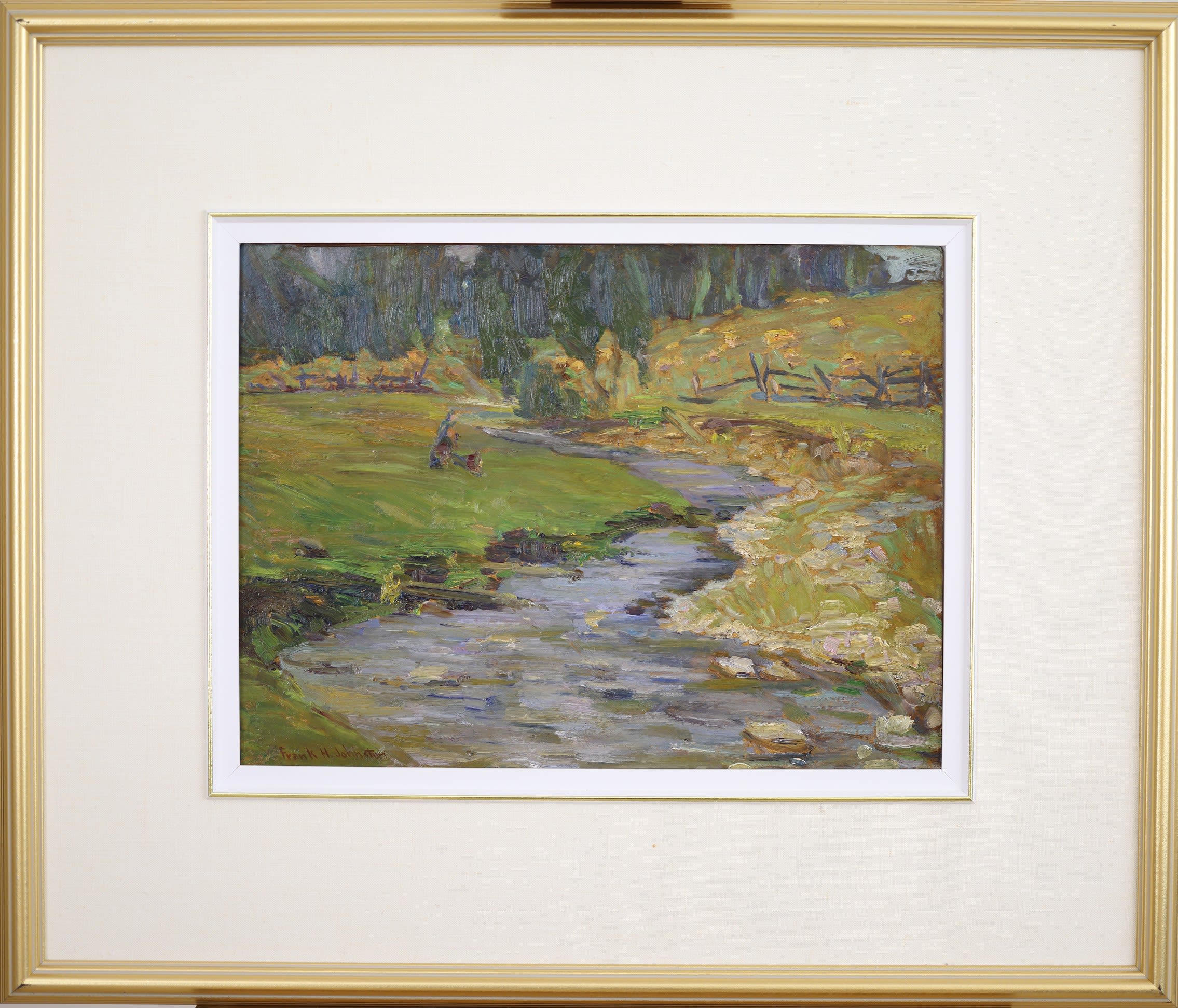
Frank Johnston; Mount Hurd, BC
In 1918, Johnston was commissioned as a war artist for the Canadian War Memorials Fund, where he recorded activities in the Royal Canadian Air Force and sketched scenes from an airplane. His works from this period are among the finest in Canadian war art collections, often featuring brilliant composition and colouring.
Johnston's work gained prominence for its expressive and vivid landscapes, particularly scenes from the Canadian wilderness. He became a founding member of the Group of Seven in 1920 but left the group in 1921 to pursue his artistic vision under the name Franz Johnston. His independent exhibitions, starting with one at Eaton's of Canada Gallery in 1920, were well-received, praised for his handling of light and vivid colouring.
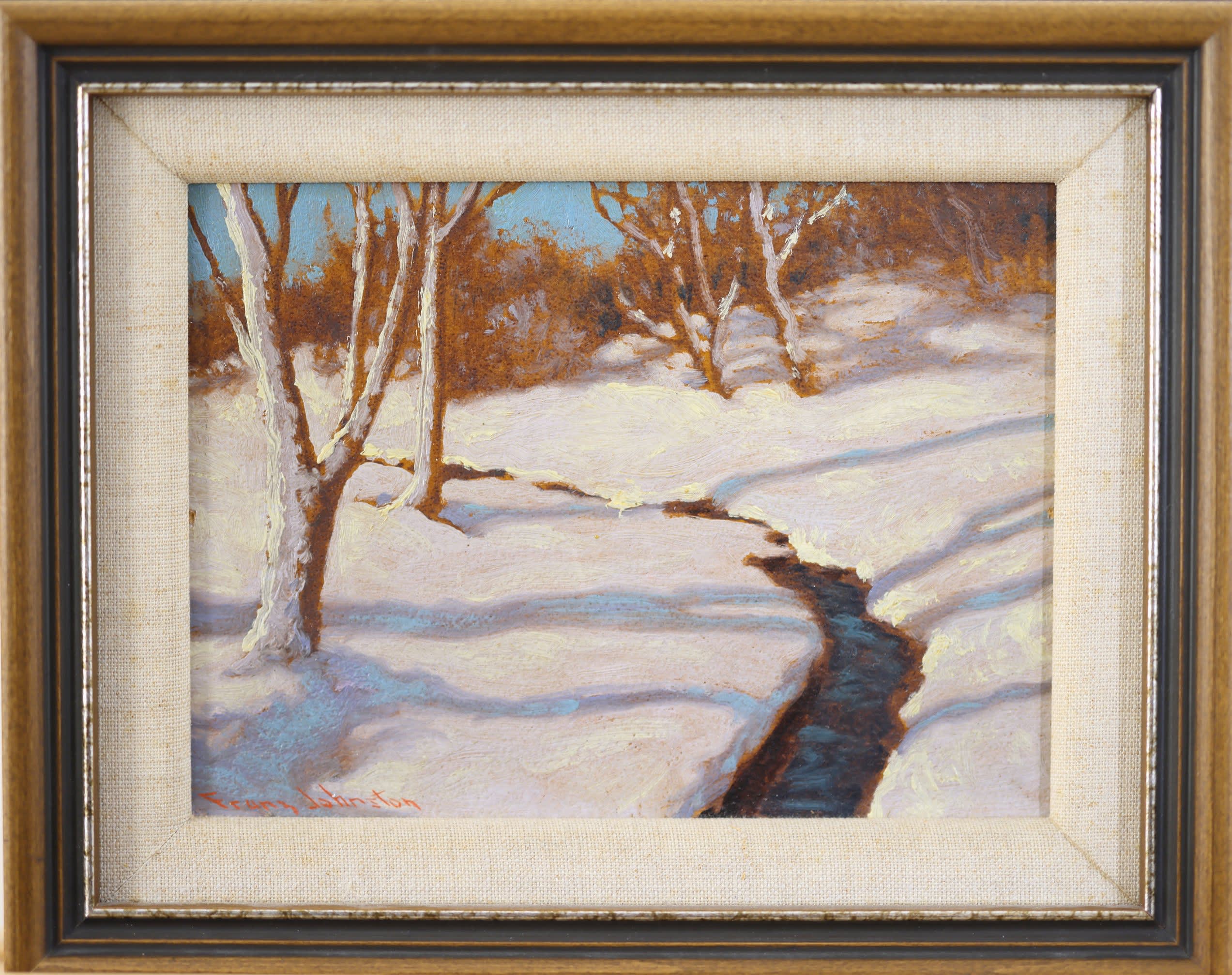
Frank Johnston; Winter Sun
In 1921, Johnston moved to Winnipeg to become the Principal at the Winnipeg School of Art and Director of the Gallery, a position he held until 1924. He returned to Toronto in 1927 and served as principal of the Ontario College of Art until 1929. Johnston's later years were marked by his regular travels to Northern Ontario and the Arctic, capturing the landscapes and Indigenous peoples. His work demonstrated a return to a more classical style, with a strong fascination for light, especially on snow, which recurred in his later works.
Johnston's contributions to Canadian art are celebrated in numerous public collections, including the National Gallery of Canada, the Art Gallery of Ontario, and the McMichael Canadian Art Collection. He passed away on July 9, 1949, in Toronto and was buried at the McMichael Canadian Art Collection museum grounds in Kleinburg, Ontario.
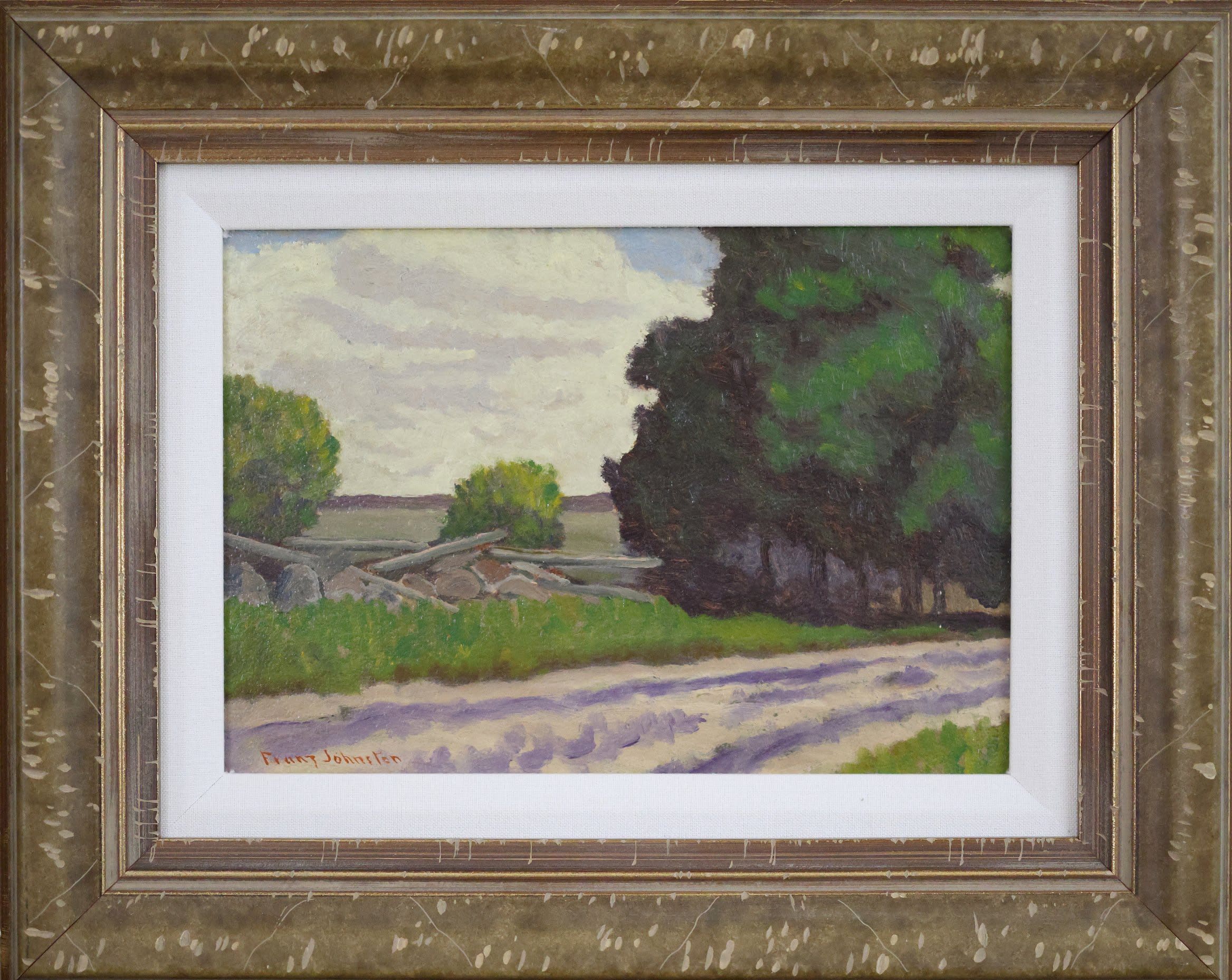
Frank Johnston; Old Dirt Road
Throughout his career, Franz Johnston held memberships with the Royal Canadian Academy of Arts, the Ontario Society of Artists, and the Canadian Society of Painters in Water Colour. His legacy continues to influence Canadian art, and he remains one of the most celebrated landscape painters in Canadian history.
